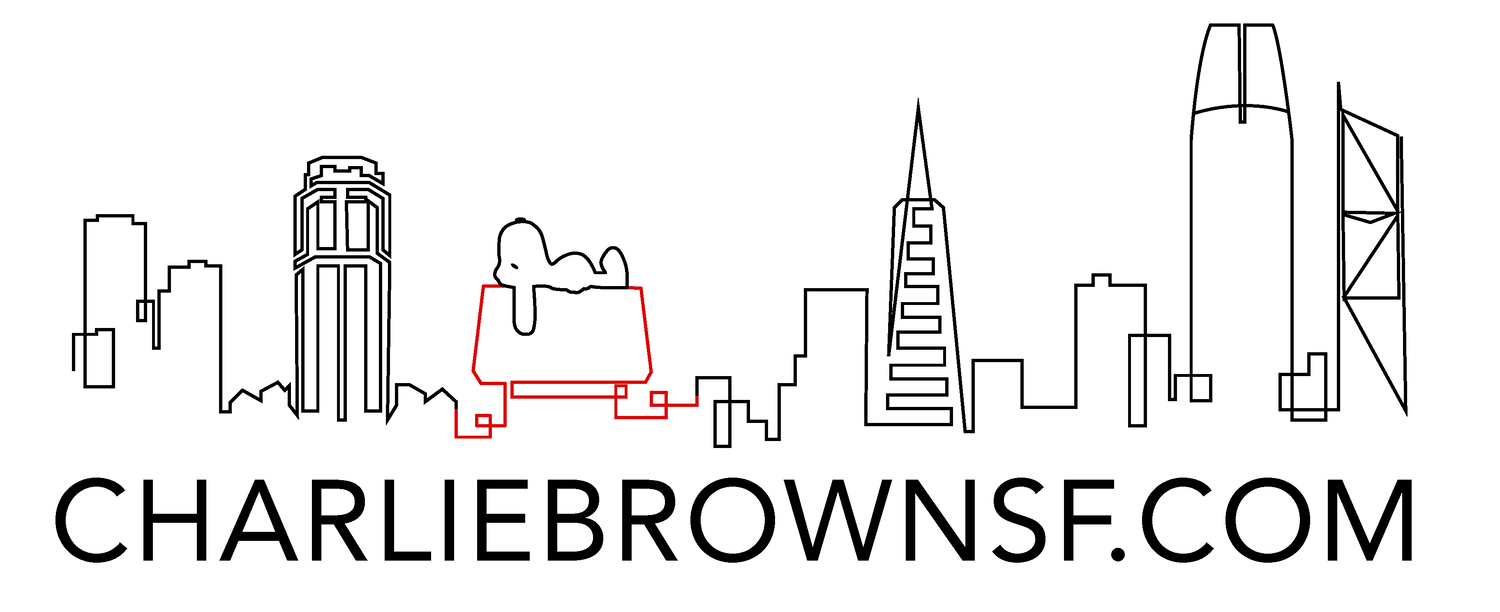The Impact of Location on Property Value
When real estate professionals repeat the mantra “location, location, location,” they’re underscoring a truth that proves itself at every listing, sale, and appraisal. The precise place where a property sits doesn’t just add character—it shapes value. For anyone looking to buy, sell, or invest, understanding how location influences value can empower smarter, more strategic decisions. At CharlieBrownSF, we know that even in a city as layered and locally driven as San Francisco, it’s the subtleties—the neighborhood footprint, the access to community assets, the vibe of safety—that tip the scales.
1. School Quality: A Family’s Top Priority
For parents, perhaps nothing is more influential than the quality of local schools. Numerous studies confirm that homes within well‑rated school districts can outperform otherwise identical homes by tens or even hundreds of thousands of dollars. In Charlotte, for instance, a similar house fell into a “D”‑district lost over $140K compared to a “B”‑district just across the street . This isn’t just about test scores; high‑performing schools attract families willing to invest in long‑term stability and community. That stability translates into stronger resale value and steadier demand.
If you're targeting family buyers, don't overlook school boundary maps, public performance data, and even informal feedback from local PTAs. At CharlieBrownSF, we consistently advise clients to validate school quality with local insights—not just ratings—because even high‑performing schools vary in programs, extracurricular support, and community culture.
2. Amenities & Walkability: Everyday Convenience Matters
“Walkability” isn’t just trendy jargon—it’s a measurable engine of property value. Walk Scores and academic assessments show that neighborhoods where daily errands, leisure walks, or evening strolls don't demand a car tend to enjoy a premium of 20% or more. Families appreciate having grocery stores, coffee shops, and playgrounds within walking distance. Commuters prize proximity to transit hubs or major arteries. In San Francisco, neighborhoods that balance inner‑city accessibility with suburban calm—like Russian Hill—are especially sought after .
When your listing highlights local hotspots—corner cafés, well-kept sidewalks, bike-friendly lanes—you’re positioning it as a lifestyle investment, not just a space to live in.
3. Parks, Green Spaces & Recreation: More Than Just Scenery
Green spaces do wonders for both well‑being and property values. Research shows that living under a half‑mile from a park can uplift values by 8–20%. Beyond views and aesthetics, parks encourage fitness, reduce stress, foster community interaction, and even enhance mental health. For families, parks double as playgrounds, exercise zones, and venues for community events. Well‑maintained parks signal civic pride, which rubs off on the surrounding real estate.
Highlighting nearby parks—urban plazas, off‑leash dog zones, village greens—adds context: the property isn’t just a house, it’s part of a healthier, happier neighborhood ecosystem.
4. Safety & Community Cleanliness: Peace of Mind Sells
No family wants to compromise on security. Clean streets and low crime rates directly translate into higher housing values . Even a single crime report can change perceptions and derail interest, while regular neighborhood clean‑up events and visible community watch signs help prime a local reputation of safety.
Buyers often drive through areas at night, check local forums, and talk to neighbors before committing. By reinforcing the sense of safety and pride in community upkeep, you avoid objections later and build trust early.
5. Transportation & Commuting: Time is Money
A property five minutes from transit or highway ramps can be worth significantly more than one requiring a daily trek. Commute times directly influence family routines and satisfaction; long drives reduce time for family meals, tutoring, homework, and play. Public transit access—especially reliable options—can lower commute stress and broaden appeal, even among non‑drivers .
If the neighborhood offers express buses, bike‑share options, ferry terminals, or light rail, those should feature prominently. Weaving commute data and nearby transit options into your post helps readers visualize a smoother life—one that’s worth spending more for.
6. Economic Health & Local Employment
Jobs follow people, and people drive housing demand. Areas with thriving local economies—tech centers, healthcare campuses, academic institutions—increase housing demand because people prefer living near where they work . Additionally, local economic growth often brings new amenities, restaurants, and entertainment, creating a virtuous cycle of desirability and value increase.
When writing about San Francisco neighborhoods, reference local growth: new developments in the Bay Area, commercial expansions, or revitalization plans that signal future potential.
7. Future Development & Zoning: Know the Risks & Rewards
Buyers often fixate on present benefits—but smart investors look toward the future. Infrastructure plans, rezoning decisions, new commercial hubs, or prestigious schools under construction can increase nearby property values. Conversely, impending construction, increased density, or commercial encroachment could lower value or change neighborhood character .
In San Francisco, for instance, development trends in the North Bay, East Bay, and emerging tech corridors have different implications—stay informed, and advise accordingly.
8. Natural Features: Water, Hills, and Views
Waterfronts and views are hard to replicate—they command enormous premiums. Analysis from Michigan shows that lake‑adjacent properties are up to 90% more valuable than similar homes farther away Midland Daily News. In San Francisco, hilltop views or waterfront access offer both lifestyle appeal and investment upside. Highlight those features with strong imagery and narrative—this is where buyers fall in love at first sight.
9. Climate, Environmental Resilience & Insurance
Location also affects risk: properties in flood zones or earthquake areas can face restricted insurance or extra premiums. For example, San Francisco properties near the waterfront or known seismic zones typically incur higher insurance rates CharlieBrownSF. That doesn’t mean avoiding them—it means planning for them. Selling resilience (reinforced foundations, insurance safeguards, eco‑upgrades) can turn a risk into a feature.
10. Eco-Friendly Features & Sustainability
Sustainability is no longer niche—it’s mainstream. Homes with solar panels, energy-efficient HVAC systems, drought‑resistant landscaping, or EV charging solutions are in demand and can command a premium . In addition, these homes align closely with San Francisco’s environmental ethos, appeal to tech-savvy buyers, and help save on utility bills—perfect talking points for blog SEO and listing descriptions.
11. Housing Options & Neighborhood Diversity
Diverse housing stock—single-family homes, condos, rentals, accessory dwelling units—attracts a broader range of buyers. Multi-generational families, young professionals, downsizers—all look for different footprint options. A neighborhood that offers flexibility in terms of layout, density, and affordability holds steady value across market cycles.
Highlighting zoning options (like ADUs), walkable design, and neighborhood evolution shows readers that location isn’t just a place—it’s a lifestyle that stretches across life stages.
12. Cultural Identity & Community Vibe
Local identity, lived in festivals, farmers’ markets, art fairs, and cultural touchpoints are intangible, but hugely influential. A neighborhood that celebrates local long-termism—whether it’s a Mediterranean street fair or a tech startup hub—offers emotional value. That emotional value often exceeds objective metrics when buyers decide where to live.
13. Safety Nets: Insurance, Taxes & Affordability
Insurance costs fluctuate based on location: waterfront and earthquake zones typically raise premiums CharlieBrownSFCharlieBrownSF. Property taxes vary by assessed value and district—San Francisco’s 1.18% rate is typical CharlieBrownSF, but add in HOA fees, transit assessments, or school bonds. Affordability net of these costs determines long-term financial comfort.
Make it tangible. Use realistic examples—total cost of ownership including taxes, insurance, HOA, commutes, childcare—for households evaluating investment potential.
14. Case Study: San Francisco’s Russian Hill
Russian Hill captures many location‑driven value drivers: historic charm, hilltop vistas, walkable corridors, proximity to North Beach, upscale retail, parks, and strong school zones. It offers both family‑oriented homes and luxury condos, with values appreciating steadily under sustained demand CharlieBrownSF. As a result, it demonstrates how premium location economies operate: supply is fixed, demand endures, and cultural identity reinforces desirability.
Putting It All Together
Location shapes property value through a complex web of factors:
Schools influence family budgets and resale steps.
Walkability adds day-to-day utility, health, and convenience.
Parks uplift aesthetics and emotional well‑being.
Safety assures peace of mind.
Commute access saves time—and money.
Local economic strength underpins market resilience.
Future development creates potential upside or downside.
Natural scenery drives emotional connection.
Insurance costs affect budgets.
Eco features lower living costs and appeal.
Diverse housing widens buyer base.
Community culture adds intangible but powerful draw.
When you combine enough of these into a single location, you get neighborhoods with lasting value: places people want to live—and stay—while continuing to increase in worth.
Advice for Buyers & Sellers
If you're buying, assess location with a multilens approach:
Research school performance and boundary maps—talk to parents.
Walk the neighborhood during the day and evening; talk to local buyers and residents.
Evaluate nearby amenities, transit, green spaces, services—and imagine daily life there.
Look into zoning, development plans, and natural hazard risk.
Compare total cost of ownership, factoring in insurance and local taxes.
If you're selling:
Highlight the compelling location factors up front in listings and your blog presence.
Invest in small amenity features: tree plantings, walkway maintenance, landscape touches.
Leverage neighborhood associations, highlight walkability maps or transit proximities.
Tell the story: what daily life looks and feels like in your community.
Why This Matters on CharlieBrownSF.com
At CharlieBrownSF, we don't just sell homes—we showcase life. We know that property is more than walls and floors; it’s about corner coffee chats, backyard playdates, weekend hikes, and neighborhood pride. That’s why every listing and consultation starts with location first—and remains anchored to its long‑term potential.
Final Thoughts
Property value isn’t solely driven by bricks and foundations—it’s rooted in where those bricks stand. When location aligns with strong schools, walkability, green spaces, safety, transit, economic opportunity, cultural identity, and resilience, homes appreciate—not just in price, but in life quality.
At CharlieBrownSF, we believe in guiding clients to places they’ll cherish—and yes, whose value will grow. Whether you're just browsing or ready to make a move, let us help you understand how location shapes everything—from your day‑to‑day comfort to your long‑term wealth.


